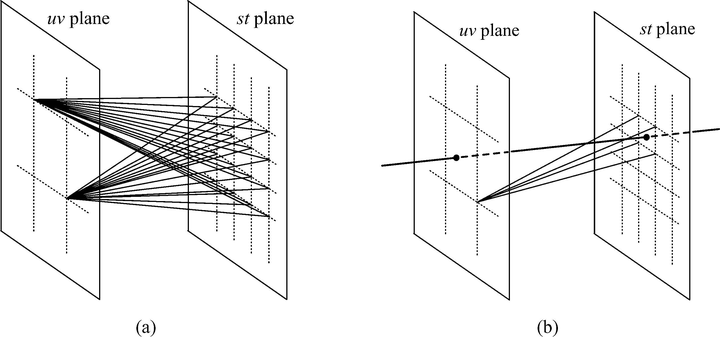A Geometric Analysis of Light Field Rendering

Abstract
Recently, many image-based modeling and rendering techniques have been successfully designed to render photo-realistic images without the need for explicit 3D geometry. However, these techniques (e.g., light field rendering (Levoy, M. and Hanrahan, P., 1996. In SIGGRAPH 1996 Conference Proceedings, Annual Conference Series, Aug. 1996, pp. 31–42) and Lumigraph (Gortler, S.J., Grzeszczuk, R., Szeliski, R., and Cohen, M.F., 1996. In SIGGRAPH 1996 Conference Proceedings, Annual Conference Series, Aug. 1996, pp. 43–54)) may require a substantial number of images. In this paper,we adopt a geometric approach to investigate the minimum sampling problem for light field rendering, with and without geometry information of the scene. Our key observation is that anti-aliased light field rendering is equivalent to eliminating the “double image” artifacts caused by view interpolation. Specifically, we present a closed-form solution of the minimum sampling rate for light field rendering. The minimum sampling rate is determined by the resolution of the camera and the depth variation of the scene. This rate is ensured if the optimal constant depth for rendering is chosen as the harmonic mean of the maximum and minimum depths of the scene. Moreover, we construct the minimum sampling curve in the joint geometry and image space, with the consideration of depth discontinuity. The minimum sampling curve quantitatively indicates how reduced geometry information can be compensated by increasing the number of images, and vice versa. Experimental results demonstrate the effectiveness of our theoretical analysis.